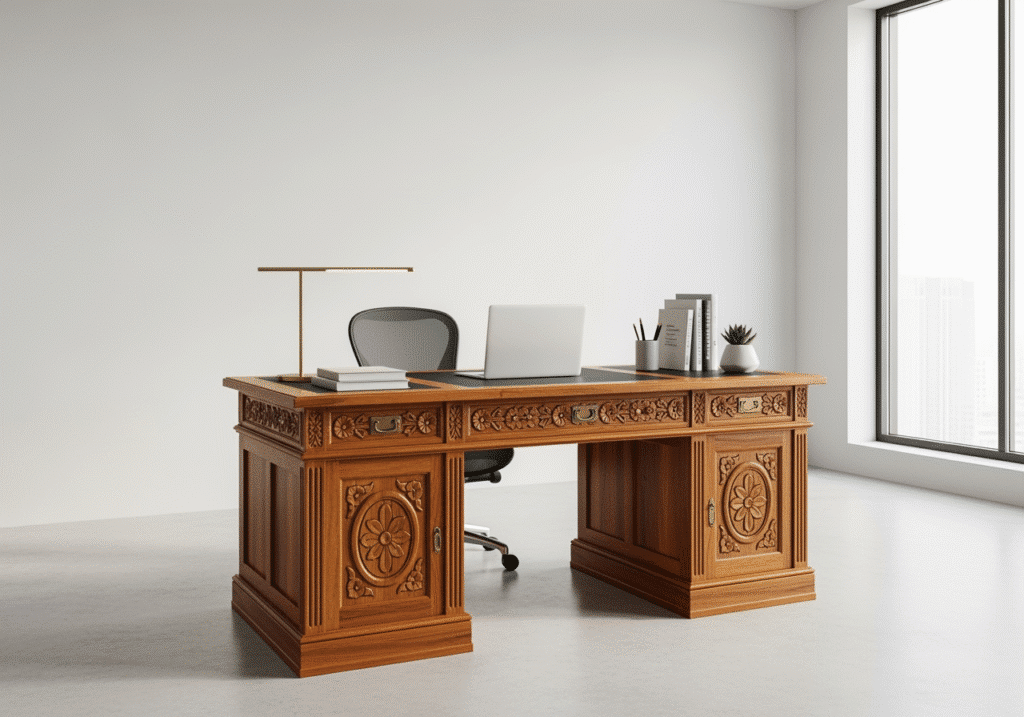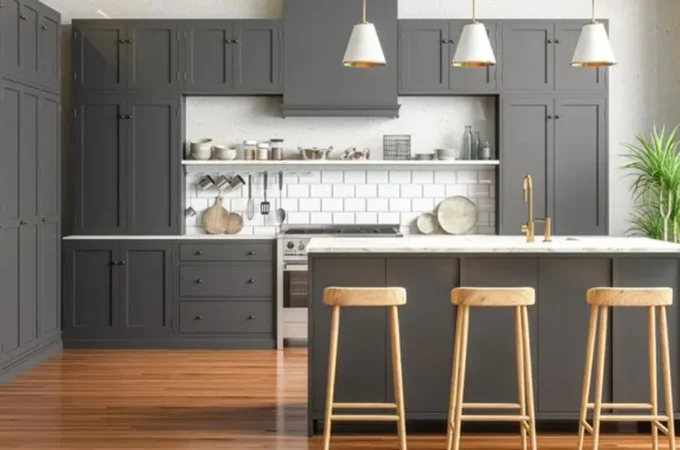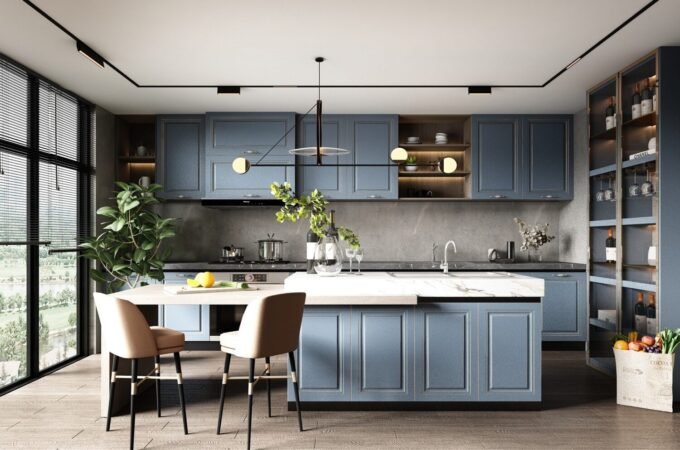
Investing in Your Home: The Lasting Value of Quality Rugs and Furniture
Our homes are more than just buildings; they reflect our lives and significant investments. When we furnish these personal sanctuaries, the choices we make impact our daily comfort and long-term satisfaction. We often face a choice between quick, inexpensive fixes and thoughtful, lasting solutions.
We believe that investing in quality home furnishings is a wise decision. It’s about choosing pieces that stand the test of time, offer actual value, and improve our living spaces for years. This includes everything from solid furniture to beautiful, High-quality area rugs that define a room.
In this guide, we will explore what makes furniture and rugs truly high quality. We’ll uncover the hidden value in craftsmanship, discuss how these investments save money over time, and help you furnish your home with intention and confidence.
The U.S. home furnishings market is robust, projected to reach $137.7 billion in 2024. A significant trend is emerging within this expansive market: consumers increasingly prioritize quality and durability when purchasing furniture, with a growing interest in sustainable and ethically sourced products. This shift reflects a more profound understanding that a home with well-made items is aesthetically pleasing and a sound investment. We’re moving away from a disposable culture towards one that values longevity and craftsmanship. This philosophy extends to the rising demand for customizable furniture options, allowing consumers to personalize pieces to fit their specific style and space, further cementing their connection to their home environment.
This section digs into the tangible and intangible quality markers, moving beyond price tags to understand true craftsmanship. We’ll explore the materials, construction techniques, and design principles that separate disposable items from future heirlooms.
Table of Contents
ToggleKey Markers of Quality in Wooden Furniture
The material and how it’s put together are paramount when evaluating wooden furniture. Solid wood construction is often the gold standard, offering superior durability and the ability to be refinished for generations. Within solid wood, a distinction is made between hardwoods (like oak, maple, cherry, mahogany) and softwoods(like pine, cedar, spruce). Hardwoods are generally more durable and resistant to dents and scratches, making them ideal for high-use pieces like dining tables and dressers.
Beyond the wood itself, wood joinery techniques are critical indicators of quality. Adhesives and staples alone are red flags. Instead, look for:
- Dovetail joints: Interlocking wedge-shaped pins and tails, commonly found in drawer construction, provide exceptional strength.
- Mortise-and-Tenon joints: A strong joint where a projecting tenon fits into a mortise (hole), connecting rails to legs.
- Box joints: Similar to dovetails but with square rather than wedge-shaped pins, also used for drawer construction.
- Dowel joints: Wooden pegs used to reinforce butt joints, often combined with glue.
These traditional joints, particularly in areas under stress, signify a commitment to lasting construction.
Hand-finishing processes, involving multiple sanding and staining steps, result in a deeper, more lustrous, and durable surface. For drawer construction, look for full-extension glides, smooth operation, and sturdy bottoms. Hardware quality also plays a role; solid metal pulls and hinges look better and stand up to repeated use.
Sustainable sourcing is another quality marker in an era of increasing environmental awareness. We often look for furniture made from responsibly harvested wood, with certifications like the Forest Stewardship Council (FSC) providing assurance. For those seeking durable and naturally weather-resistant options, exploring resources on Premium teak home furnishings can offer valuable insights into materials that exemplify quality and sustainability. Understanding the origins and types of wood used can be further improved by consulting resources like those from the U.S. Forest Service on identifying wood types.
The Anatomy of a Superior Upholstered Piece
Upholstered furniture, such as sofas and armchairs, requires different quality indicators, but the principle remains the same: what’s inside counts. The foundation of any good upholstered piece is its frame material. Kiln-dried hardwood (like maple, birch, or oak) is essential. Kiln-drying removes moisture, preventing warping and cracking over time. Plywood or particleboard frames are less durable and prone to breaking.
Frame joinery for upholstered pieces should include corner blocks, dowels, and screws, never just staples or glue. Corner blocks, specifically, provide crucial reinforcement at stress points. The spring system significantly impacts comfort and longevity. The gold standard is 8-way hand-tied springs, where each spring is individually tied to the frame and each other, offering superior support and durability. Sinuous (S-shaped) springs are a more common and still good alternative, but generally not as resilient as 8-way hand-tied. Drop-in coil systems are a step down, and webbing is typically found in lower-quality pieces.
Cushion filling affects both comfort and how well the piece retains its shape. High-density foam offers firm support and maintains its shape well, while down or feather blends provide a softer, more luxurious feel, though they may require more fluffing. Hybrid options combine foam cores with down wraps to balance support and softness.
Fabric durability is measured by the “double rub count,” which indicates how often a fabric can be rubbed before showing wear. A fabric of 15,000 to 25,000 is good; anything above 25,000 is considered heavy-duty. Look for careful pattern matchingacross seams and cushions, a sign of meticulous craftsmanship. Finally, stitching quality should be tight, even, and without loose threads.

Decoding the Craftsmanship of Fine Rugs
Rugs are often the unsung heroes of home design, anchoring a room and adding warmth, texture, and color. The quality of a rug is primarily determined by its construction and materials. Material matters immensely:
- Wool is durable, naturally stain-resistant, flame-retardant, and soft underfoot. It’s a classic choice for its longevity and luxurious feel. Many traditional styles, like Gabbeh Rugs or Heriz Rugs, are known for their high-quality wool.
- Silk: Exceptionally soft and lustrous, silk rugs are often used for intricate details and can be expensive. Kashan Rugs or Qum Rugs frequently feature silk.
- Cotton: Often used for the foundation (warp and weft) of wool and silk rugs, providing stability. It can also be used for flatweave rugs like Kilim Rugs.
The method of construction is crucial. Hand-knotted rugs are the pinnacle of rug craftsmanship. Each knot is tied by hand onto the warp and weft threads, creating an incredibly durable and intricate piece. These rugs can last for generations and are often appreciated. Examples include exquisite Persian Rugs and Oriental Rugs. Hand-tufted rugs are made by punching yarn through a fabric backing with a tool, then gluing a secondary support to hold the fibers in place. They offer a hand-made look at a lower price point, but are less durable than hand-knotted. Power looms mass-produce machine-made rugs, which are the most affordable but lack the artistry and longevity of hand-knotted pieces.
Knot density (KPSI knots per square inch) is a key indicator for hand-knotted rugs; a higher KPSI generally means a finer, more detailed, and more durable carpet. Dye types also impact quality; natural dyes offer rich, subtle variations and fade beautifully over time, while synthetic dyes can provide vibrant, consistent colors. Design clarity and weave consistency are visual cues of a well-made rug, indicating skilled artistry. The unique character of High-quality area rugs often lies in these subtle details of craftsmanship. Even the fringe on a hand-knotted rug is an integral part of its structure, not merely an add-on. For those seeking modern aesthetics, exploring modern contemporary rug design still requires attention to these fundamental quality markers.
The True Value of Investing in Quality Home Furnishings
While the initial cost may be higher, quality home furnishings represent a more intelligent financial decision. This section breaks down the economic and personal benefits, reframing the purchase from an expense to a long-term investment in your home and lifestyle.
Calculating the Real Cost: A Shift in Perspective
Many consumers focus solely on the sticker price, but a more insightful approach is a cost-per-use analysis. A cheaper sofa might need replacement every 3-5 years, while a high-quality one could last 15-20 years or more. Over that extended period, the “expensive” sofa actually costs less per year of use. This highlights the concept of longevity vs. planned obsolescence, where many mass-produced items are designed to be replaced frequently. The average household spends approximately $1,500-$2,000 annually on furniture and home furnishings. Imagine reducing that annual outlay significantly by investing in pieces that last.
Quality pieces also maintain their resale value better than their cheaper counterparts. Should your style change or you move, a well-maintained, high-quality item can often be sold for a respectable sum, recouping part of your initial investment. Furthermore, truly exceptional pieces have heirloom potential, becoming cherished family possessions passed down through generations, carrying sentimental and monetary value.

Finding Value in Quality Home Furnishings
The pursuit of quality doesn’t always mean paying exorbitant prices. Savvy shoppers can find exceptional value, especially in regions known for their furniture heritage. Take, for instance, the “North Carolina Advantage Pricing” concept. Good’s Home Furnishings, based in Hickory, North Carolina, leverages its location in the “home of quality furniture manufacturing in the U.S.” to offer what they claim is the “best value in quality home furnishings anywhere in the country.” This geographical advantage allows them to provide competitive pricing on high-end furniture, a benefit passed directly to the customer. This unique positioning is a prime example of how retailers stay competitive, particularly in pricing and product selection (Q2, Q9).
Visiting furniture hubs like Hickory, NC, or exploring stores in areas like Raleigh, NC, or Statesville, NC can provide direct access to a vast selection and often better pricing. Showroom benefits are immense; they allow us to see, touch, and experience furniture firsthand. Look out for off-season sales and floor model discounts for opportunities to acquire quality pieces at reduced prices. Understanding warrantiesis also crucial; reputable manufacturers and retailers stand behind their products, offering peace of mind. The role of knowledgeable sales staff cannot be overstated; they can guide us through options, explain construction, and help us make informed decisions. For larger purchases, many retailers offer financing options, such as “up to 12 months special financing” as seen at Good’s Home Furnishings, making quality more accessible (Q4). These partnerships with manufacturers and brands ensure a diverse, high-quality offering (Q6).
The Non-Monetary Returns: Comfort, Health, and Well-being
Beyond the financial aspects, quality home furnishings offer significant non-monetary returns. Ergonomics and support are crucial for our physical health. A well-constructed mattress or an ergonomically designed office chair can prevent back pain and improve posture. Conversely, low-quality materials can contribute to off-gassing, releasing volatile organic compounds (VOCs) into our homes, potentially impacting air quality and health.
The psychological impact of a beautiful environment is profound. A thoughtfully furnished home can reduce stress, foster creativity, and improve overall mood. It helps us create a true sanctuary—a place of comfort and refuge from the outside world. There’s a clear connection between our home environment and mental well-being, as resources like Psychology Today highlight how your home environment affects your mental health. Finally, there’s the simple pride of ownership that comes from investing in pieces that are beautiful and built to last, reflecting our values and taste.
Curating Your Space: A Practical Approach to Furnishing
Furnishing a home is a journey, not a sprint. Whether starting with a blank slate or looking to lift an existing room, a strategic approach ensures a cohesive and timeless result. This section provides actionable advice for projects of any scale.
Starting with a Foundation: The Statement Piece
Every well-designed room often has a “hero” item—a focal point that draws the eye and sets the tone. This could be a dramatic piece of art, a unique architectural feature, or, very commonly, a significant piece of furniture or a rug. Using a rug to anchor a room is a classic design technique. A large, beautiful carpet can define a seating area, introduce a color palette, and add warmth and texture. Similarly, investing in a dining table for family gatherings or a high-quality sofafor the living room can serve as the foundational pieces around which the rest of the room is built. These pieces help create a color palette and overall style from a central point, ensuring cohesion.

A Room-by-Room Guide to Prioritizing Quality
When furnishing, it’s wise to prioritize quality where it matters most—in items that see heavy use or are central to the room’s function and aesthetic. This helps cater to customer needs, from individual pieces to complete room makeovers (Q7).
- Living Room: Invest in a durable sofaand comfortable accent chairs. A solid coffee table will withstand daily use. Good lighting (lamps, overhead fixtures) is crucial for function and ambiance.
- Dining Room: A sturdy dining tableand comfortable, well-constructed chairs are key. A sideboard or buffet can add storage and serving space.
- Bedroom: The bed frame should be robust, but the mattress is arguably the most crucial investment for health and well-being. Quality storage pieces like dressers and nightstands will last.
- Home Office: An ergonomic desk and a supportive office chair are vital for productivity and health, especially those working from home.
Focusing your investment on these high-use items ensures longevity and comfort where needed most.
The Rise of Personalization in Home Design
Today’s consumers don’t just want furniture; they want pieces that reflect their unique style. This has led to a surge in demand for customizable furniture options. We can now select fabrics, finishes, leg styles, and configurations to create bespoke pieces. Many retailers offer made-to-order pieces, allowing us to tailor dimensions or select unique materials. Working with designers can be invaluable in this process, helping us steer choices and translate our vision into reality. Resources like Architectural Digest’s insights on the custom furniture trend highlight this growing desire for individuality. This allows us to create a unique space that feels distinctly “ours,” expertly balancing custom pieces with ready-made items to achieve a cohesive and personal aesthetic (Q7).
The Modern Shopping Journey: Integrating Digital and Physical
In today’s market, the path to purchase is multifaceted. Savvy consumers leverage online resources for research and physical showrooms for tactile evaluation, ensuring they make informed decisions they’ll be happy with for years.
The Enduring Role of the Physical Showroom
Despite the rise of e-commerce, the physical showroom remains indispensable for quality home furnishings. There’s no substitute for the ability to assess comfort and scale firsthand. We need to sit on that sofa, feel the texture of the fabric, and understand the actual size of a dining table in person. Feeling textures and materialsis crucial; online images can’t convey velvet’s softness or solid wood’s grain. Verifying color in natural light is vital, as screen displays can alter perceptions.
The experience of visiting furniture destinations like Hickory and Charlotte, NC, where Good’s Home Furnishings has significant showrooms, offers a unique advantage (Q8). These locations provide access to a vast array of high-quality options and the opportunity to build relationships with local retailers and their expert staff. The “sit test” for chairs and sofas is non-negotiable; comfort is subjective, and only personal experience can confirm it. Retailers like Crate & Barrel and Ethan Allen understand this, offering immersive showroom experiences.
Leveraging Digital Tools and Design Services
Complementing the physical experience, digital tools have revolutionized how we approach home design. Online room planners allow us to visualize layouts, while virtual consultations with designers offer expert advice from the comfort of our homes. Using social media for inspirationis commonplace, with platforms like Instagram and Pinterest serving endless wellsprings of ideas. Many companies, including Crate & Barrel, offer apps with “exclusive perks” and “design desk” services, providing free design help for any project (Q10). We can also follow brands on social media, such as The Sleep Source on Facebook, for updates and inspiration.
The value of professional design services cannot be overstated. Designers can help refine our vision, select appropriate pieces, and ensure a cohesive look for individual pieces or complete room makeovers. Creating mood boards digitally or physically helps solidify design concepts. Finally, reading customer reviews and testimonials provides valuable insights into product performance and customer satisfaction, helping us ensure quality across the product range and services (Q5).
The Growing Demand for Sustainable and Ethical Furnishings
A significant trend in the home furnishings market is the increasing consumer awareness of environmental and social impact. There’s a growing demand for sustainable and ethically sourced products. We seek out brands with transparent supply chains, wanting to know where materials come from and under what conditions products are made. Certifications like FSC for wood products are essential to ensure responsible forestry. Similarly, understanding ethical sourcingfor materials like fabrics and rugs ensures fair labor practices. This movement towards natural and non-toxic materials reflects a desire for healthier homes and a reduced environmental footprint.
Caring for Your Investment: A Guide to Longevity
Quality pieces are built to last, but proper care is essential to keep them looking their best for decades. Simple, consistent maintenance can prevent damage and preserve the beauty and value of your furniture and rugs.
Essential Care for Wood and Upholstered Furniture
For wooden furniture, dust and clean wood regularly with a soft, dry cloth. Avoid abrasive cleaners. Protecting surfaces from heat and moisture is paramount; use coasters under drinks and trivets under hot dishes. Sunlight can also cause fading, so consider window treatments.
Regular vacuuming with an upholstery attachment removes dust and debris from upholstered furniture. Address spills immediately with a clean cloth and appropriate cleaner, always spot-testing first. Rotating cushions regularly helps ensure even wear and extends their life. Depending on usage, professional cleaning schedules every 1-2 years can refresh fabrics and remove deep-seated dirt. Resources like The Spruce offer detailed furniture care guides that can be invaluable.
Preserving the Beauty of Your Rugs
Rugs, especially high-quality ones, require specific care to maintain beauty and integrity. Regular vacuuming techniquesare essential, but avoid using a beater bar on delicate or hand-knotted rugs, as it can damage fibers. Instead, use a suction-only setting. Rotating rugs for even wear every 6-12 months prevents excessive wear in high-traffic areas.
Immediate spill and spot cleaning is critical; blot, don’t rub, and use appropriate cleaning solutions. Using a quality rug padis highly recommended. A good pad prevents slipping and provides a cushioned layer that protects the rug’s fibers from friction with the floor, extending its life. Knowing when to call a professional cleaner is also important; for deep cleaning or stubborn stains, experts have the tools and knowledge to clean without causing damage. Even for specialized rugs like Outdoor Rugs or Washable Rugs, following manufacturer guidelines is key to longevity. Understanding the material composition of specific types, like traditional or modern rugs, will guide the best care practices.
Frequently Asked Questions about Quality Furnishings
How can I quickly assess the quality of a wooden dresser in a store?
When examining a wooden dresser, open a drawer and look at the corners—dovetail joints are a key indicator of quality craftsmanship, providing superior strength compared to stapled or glued joints. Second, feel the weight of the piece; solid wood is significantly heavier than particleboard or MDF. Finally, check the back panel—a solid wood or thick plywood panel is much better than a flimsy cardboard-like one, indicating overall structural integrity.
What is the most crucial factor to consider when buying a family-friendly sofa?
The two most critical factors for a family-friendly sofa are the frame constructionand the fabric. A kiln-dried hardwood frame (like oak or maple) will withstand years of heavy use without warping or breaking. Look for a high-performance material with a high “double rub” count (ideally over 25,000) for the fabric. These fabrics are engineered to resist stains, fading, and pilling, making them durable enough for active households.
Is a hand-knotted rug always a better investment than a machine-made one?
A hand-knotted rug is generally superior from a pure investment and longevity standpoint. Each knot is tied by hand, creating a durable, one-of-a-kind piece that can last for generations and often appreciates, especially for rare or antique pieces. Machine-made rugs can offer beautiful designs at a more accessible price point but lack the same durability, unique character, and long-term investment potential. While they serve a purpose for temporary or budget-conscious decorating, they won’t offer the same heirloom quality.
Conclusion: Furnishing a Home with Intention and Foresight
Choosing quality home furnishings is an act of intention. It’s a decision to invest not just in physical objects, but in your personal sanctuary’s comfort, beauty, and longevity. By focusing on craftsmanship, timeless design, and sustainable materials, you create a home that looks beautiful and tells a story of enduring value—a legacy to be enjoyed for years to come. We hope this guide empowers you to make informed choices, changing your house into a truly well-appointed home that serves you and your family for decades.






